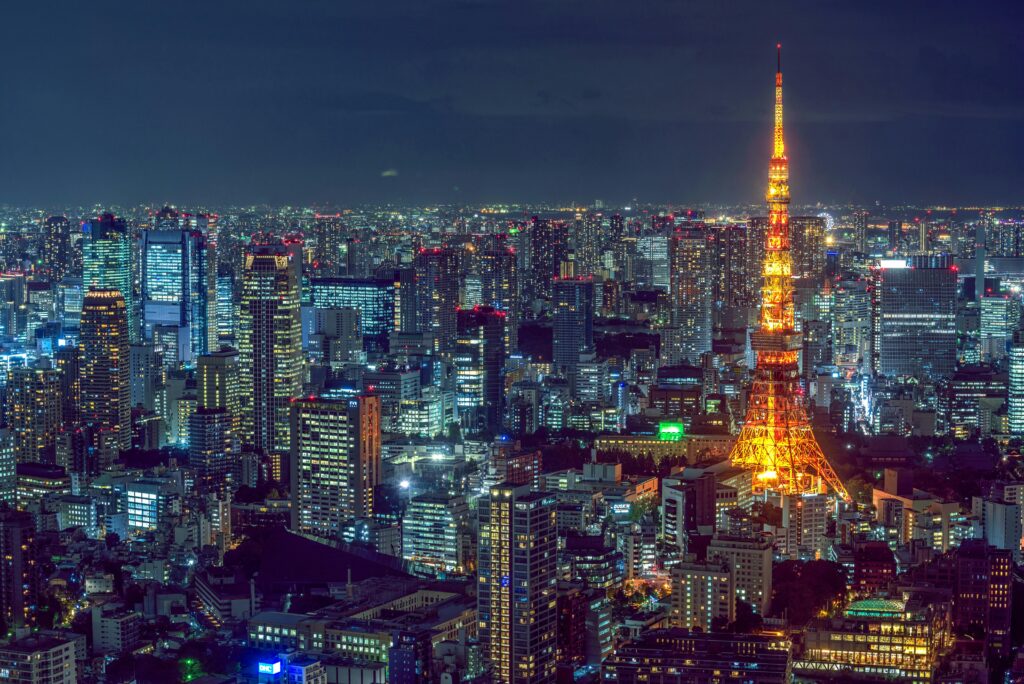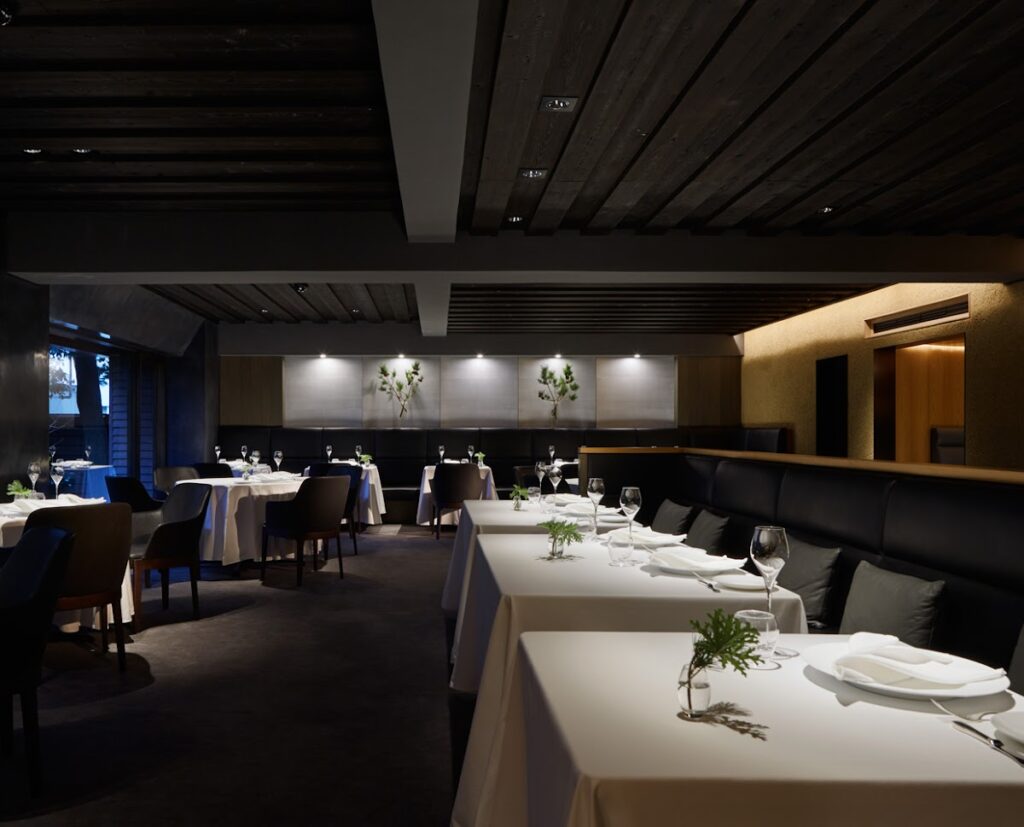There’s something almost rebellious about craving familiar flavors in a city that serves some of the world’s most extraordinary cuisine. Yet here I am, after five years living in Tokyo, still seeking out those quiet corners where the lighting feels softer, the service unhurried, and the menu speaks a language my California-raised palate recognizes – even when it’s been beautifully translated through Japanese sensibilities.
It’s not homesickness, exactly. It’s more like finding a secret handshake in a foreign country – that moment when you discover a place that somehow bridges the gap between where you’re from and where you’ve chosen to be. Tokyo, for all its incredible izakayas and ramen counters, also harbors some genuinely surprising Western-inspired gems that feel less like imitation and more like thoughtful conversation between cultures.
These aren’t the obvious expat hangouts in Roppongi or the Instagram-famous brunch spots that every travel blog mentions. These are the places where Japanese chefs have taken Western techniques and ingredients, filtered them through their own aesthetic, and created something that feels both familiar and entirely new. The kind of restaurants where you might find yourself lingering over a glass of wine, watching the city blur past the windows, wondering how you got so lucky to stumble into this particular corner of Tokyo.

Photo by Nick Kwan
The Art of Intimate Dining in a Crowded City
What strikes me most about Tokyo’s better Western-inspired restaurants isn’t their food – though that’s often exceptional – it’s their mastery of space and atmosphere. In a city where privacy is precious and silence is golden, these places understand that sometimes what we’re really hungry for isn’t just good food, but a sense of sanctuary.
Take the lighting, for instance. The best spots seem to have figured out that perfect balance between dim enough to feel intimate and bright enough to actually see your companion’s face. It’s an art form, really – this Japanese attention to ambiance that turns dinner into something closer to meditation than mere consumption.
The service style tells its own story too. There’s a particular grace to how staff move through these spaces – attentive without being intrusive, knowledgeable without being pretentious. It’s the kind of service that makes you feel like a regular even on your first visit, where the sommelier remembers your preference for natural wines and the chef sends out a small additional course “because the uni looked particularly good today.”
Standout Venues Worth the Journey
Photo by レフェルヴェソンス
L’Effervescence (Nishi-Azabu)
Shinobu Namae’s approach to French cuisine through a distinctly Japanese lens offers one of Tokyo’s most thoughtful dining experiences. The restaurant’s commitment to seasonal ingredients creates a menu that shifts subtly throughout the year, but it’s the restaurant’s hushed, almost library-like atmosphere that sets it apart. L’Effervescence feels like dining inside a carefully curated art installation – every element, from the handmade ceramics to the precisely folded napkins, contributes to an experience that’s both refined and deeply personal.
What I love most here is how conversations naturally drop to whispers, not because you have to, but because the space seems to invite a different kind of interaction. The wine pairings lean heavily into natural and biodynamic bottles, many from small French producers you’ve probably never heard of but will certainly remember.
Cedros (Daikanyama)
Tucked away in Daikanyama, Cedros represents something I didn’t know I was looking for until I found it – a restaurant that somehow captures the laid-back elegance of Southern California while remaining unmistakably Tokyo in its execution. The Oyamada brothers, Craig and Andy who grew up in Los Angeles, have created a space that feels like a cross between a friend’s living room and a serious seafood restaurant, if such a thing is possible.
The magic happens in the details: lighting so carefully calibrated it makes everyone look like they’re starring in their own indie film, a sound level that allows for actual conversation, and a staff that treats their work with the kind of serious intention that elevates the entire experience. Their seasonal tostadas change monthly – sometimes featuring Thai fish, sometimes firefly squid – and their lobster risotto has been a signature since opening, but what keeps me coming back isn’t any single dish. It’s the way time seems to slow down here, how one drink turns into three without you noticing, how the quiet feels invigorating rather than empty.
The seafood focus makes sense in a city surrounded by some of the world’s best waters, though Cedros approaches it differently than most Tokyo restaurants. While so many places here spotlight wagyu, this kitchen celebrates the incredible diversity of Japan’s coastal offerings through a California lens – light, bright, and surprisingly playful.
Florilège (Aoyama)
Hiroyasu Kawate’s modern French approach has earned serious recognition (two Michelin stars, if you’re keeping track), but what draws me back to Florilège isn’t the accolades – it’s the restaurant’s commitment to making fine dining feel approachable. The open kitchen concept lets you watch the intricate plating process, turning dinner into a kind of performance art, while the wine program favors natural and biodynamic producers who share the chef’s philosophy about ingredients.
The tasting menu changes seasonally, but there’s always a sense of playfulness alongside the technical precision. Dishes might arrive in unconventional vessels – a single spoon, a small stone bowl, a piece of driftwood – that make you reconsider your assumptions about how food should be presented.
Navigating Tokyo’s Dining Scene as a Foreign Food Lover
Living here has taught me that the best Western-inspired restaurants in Tokyo aren’t trying to recreate exact replicas of dishes from home. Instead, they’re engaged in a more interesting project – translating flavors and techniques through a completely different cultural lens, creating something that feels both familiar and entirely new.
The reservation game requires some strategy. Popular spots like these often book out weeks in advance, especially for weekend dinners. TableCheck has become the standard booking platform for most serious restaurants, though some still prefer phone reservations (don’t let the language barrier deter you – most high-end places have English-speaking staff).
Timing matters more than you might expect. Lunch reservations are often easier to secure and frequently offer similar quality at lower prices. Many restaurants also keep a few counter seats available for walk-ins, though arriving right at opening time gives you the best chance of snagging one.
The wine scene deserves its own mention. Tokyo’s natural wine movement has exploded in recent years, with many restaurants offering bottles from small European producers that you’d be hard-pressed to find elsewhere in Asia. Don’t hesitate to ask for recommendations – sommeliers here tend to be genuinely passionate about their selections and enjoy sharing discoveries with curious diners.
Price points vary dramatically, but expect to spend more than you would for comparable meals in most Western cities. The good news is that the quality justifies the cost – these aren’t just restaurants serving good food, they’re crafting complete experiences that linger in memory long after the last bite.
The Seasonal Rhythm of Tokyo Dining
One thing that constantly surprises visitors is how dramatically menus change throughout the year. Unlike Western restaurants that might swap out a few seasonal specials, many Tokyo establishments rebuild their offerings almost entirely with each season. This isn’t just about ingredient availability – though the commitment to peak seasonality is real – it’s about creating dining experiences that reflect the subtle shifts in weather, mood, and cultural rhythm that define Japanese life.
Spring brings wild vegetables and the first delicate fish of the year. Summer menus lighten considerably, featuring more raw preparations and cooling techniques. Fall introduces heartier flavors and warming spices, while winter menus embrace rich, comfort-driven dishes that make the city’s cold months feel almost cozy.
For diners, this means that returning to the same restaurant in different seasons can feel like discovering an entirely new place. That tostada at Cedros that featured cherry blossoms in April might showcase matsutake mushrooms come October, transforming a familiar dish into something completely unexpected.
This seasonal approach extends to the wine and sake selections as well. Many restaurants adjust their beverage programs to complement the changing food offerings, introducing lighter, more mineral-driven wines in summer and richer, more complex bottles as the weather cools.
Beyond the Meal: Understanding Tokyo’s Hospitality Philosophy
The concept of omotenashi – often translated as hospitality, though that doesn’t quite capture its depth – permeates every aspect of dining in Tokyo’s better restaurants. It’s not just about friendly service (though the service is invariably excellent), it’s about anticipating needs before they’re expressed and creating an environment where guests feel genuinely cared for.
This might manifest as a server who notices you’ve finished your water and refills it without being asked, or a chef who sends out a small additional course because they noticed you particularly enjoyed a certain flavor combination. It’s hospitality that feels effortless precisely because it’s been so carefully considered.
For Western diners, this level of attention can feel almost overwhelming at first. We’re used to being left alone with our meals, to flagging down servers when we need something. Tokyo’s approach inverts this relationship – the staff’s job is to create an experience so seamless you never have to think about the mechanics of dining.
The result is meals that feel less like transactions and more like temporary memberships in an exclusive club where your comfort and enjoyment are the primary concerns. It’s an approach that transforms eating from a necessity into a form of luxury, regardless of how much you’re spending.
Finding Your Own Corner of Comfort
What draws me back to these particular restaurants isn’t just their food or their atmosphere – though both are exceptional. It’s the way they’ve managed to create spaces that feel both distinctly Tokyo and somehow universal in their appeal. They’ve figured out how to honor their Japanese context while creating experiences that speak to anyone who appreciates thoughtful hospitality and genuine craftsmanship.
Whether you find yourself savoring natural wine and seasonal vegetables at L’Effervescence, lingering over conversation at a calm spot like Cedros, or watching the theater of fine dining unfold at Florilège, the key is allowing yourself to slow down and appreciate the careful attention that goes into every detail. These aren’t restaurants you rush through – they’re places where time moves differently, where the simple act of sharing a meal becomes something approaching art.
Tokyo’s Western-inspired dining scene offers something increasingly rare in our hurried world – permission to take your time, to savor not just flavors but moments, to remember that some of life’s greatest pleasures are found not in the destination but in the grace notes along the way. In a city that never stops moving, these quiet corners of California-meets-Japan offer something even more valuable than good food – they offer sanctuary.
For more intimate dining recommendations in Tokyo, check out Time Out Tokyo’s guide to romantic restaurants or explore The Japan Times’ food and drink section for the latest openings and seasonal menu changes.


